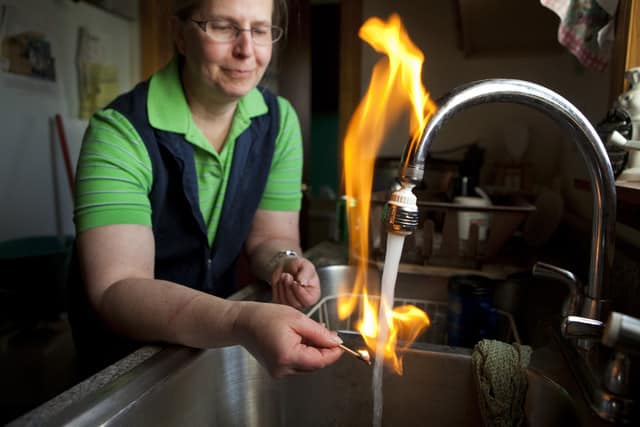Water Pollution from Fracking Confirmed – EPA will do Nothing by Life Water Ionizers
Four states, Pennsylvania, Ohio, West Virginia, and Texas have confirmed over 100 cases of water pollution caused by fracking over the last 5 years. The EPA confirms that these reports are violations of the US clean water act, but says it will not take action against the polluters due to politics and limitations in personnel, resources, and budget (Volcovici, V).

In fact, the EPA’s internal watchdog chose to release their report that shows water pollution caused by fracking on Christmas Eve, a time that the report would have been least likely to be noticed. The facts are very clear: If your water is polluted by fracking, help is not on the way. You must protect yourself by knowing what fracking puts in your water and taking action to filter it yourself. Learn More
Most Common Water Pollutants Found Near Fracking Sites
Methane: If you live within a mile of a fracking site, the most common pollutant found in your water is methane gas. Methane is flammable, odorless and colorless, and it’s heavier than air. All four of these factors combine to create a very dangerous situation. Your home could fill with methane gas and possibly explode if the methane is ignited. The most common sign of methane in tap water is that you are able to set the water coming out of your tap on fire.
Benzine: Is a petrochemical that is hazardous to your health – even in small amounts. Benzine can harm you if you drink or bathe in water that is contaminated with it.
Heavy Metals: Metals found deep beneath the surface of the earth are broken loose, and combine with fracking waste water before it returns to the surface. Some of these heavy metals are radioactive.
Salt: Is part of the chemical “cocktail” that frackers use to break loose deposits of natural gas.
Radiation: Fracking brings radioactive materials from deep inside the Earth up to the surface, where they contaminate air and drinking water
Unknown: Fracking companies obtained a loophole in EPA requirements called “the Halliburton loophole” which exempts them from reporting what kinds of chemicals they’re using. Because of this, there is no way to determine which chemicals are being used, so there could be any number of additional toxins in fracked water.
How to protect yourself from fracking water pollution
The best thing you can do is move, it’s not healthy to live close to fracking operations since they produce air pollution too. If you can’t move, you should take these steps:
Monitor your water for flammable methane by attempting to set fire to it. If you can set your tap water on fire, install a ventilation system in your basement to prevent methane fumes from building up in your home.
Test your tap water for toxic chemicals. If any are found you should install a whole home filtration system.
Select the whole home filtration system based on the chemicals reported in the water test
Monitoring your water for methane: Methane is colorless, odorless, and heavier than air. This means it can fill your home – leading to risk of explosion. The safest way to test for methane gas is to go outside and run water through a garden hose. Hold a flame next to the water coming out and see if it ignites.
Test your water by sending a sample to a water testing lab.
Want to let others know about the toxins fracking put in your water? Send a copy of the test results to Life Ionizers. We will write an article about your water!
Select a whole home filtration system. If you want expert help selecting the right filtration system, call Life Ionizers at 877-959-7977 We have filtration experts on staff ready to help you.
References
Volcovici, V. U.S. EPA unlikely to step up fracking enforcement efforts for now -analysts
http://www.reuters.com/article/2014/01/05/usa-energy-fracking-idUSL2N0KC0T320140105